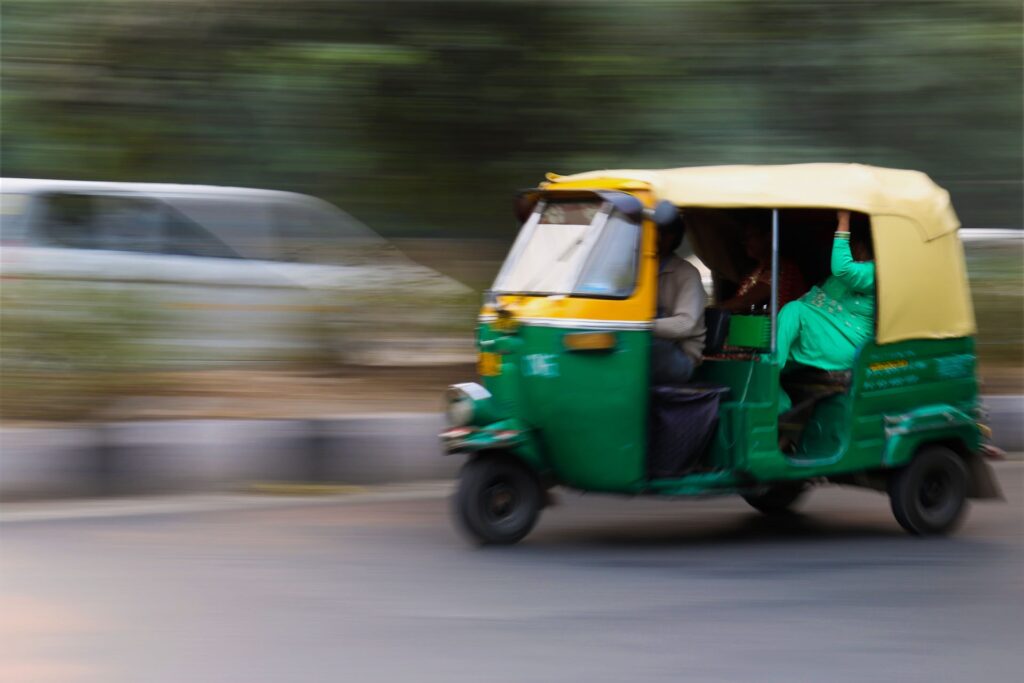Auto-rickshaws, the excellent three-wheeler vehicles, have been an integral part of the bustling streets of India for decades. Even today, they are the most preferred for being affordable, quick, and convenient.
Sitting in the auto, our curious cat makes rounds inside our mind, wondering- Who came up with this idea? What did they think while inventing? Why this design? And more.
This article will give you a little History of the inventor of auto-rickshaws.
Table of Contents
Who invented the auto-rickshaw?
Men earlier pulled Rickshaws before they went fully automatic. The idea behind this mode of transportation was by three Japanese inventors – Izumi Yosuke, Suzuki Tokujiro, and Takayama Kosuke, in 1868. It is believed that in the 17th century, rickshaws were also seen on the streets of France as cabriolets and fiacres.
Later, with globalization and the world advancing, the rickshaw was also revamped, and the auto-rickshaw was invented. The brainchild behind this was General Corradino D’Ascanio, an Italian aircraft manufacturer and the creator of ‘The Vespa.’ In the 1940s, D’Ascanio wanted to make a vehicle that would change the crowded urban streets, where the drivers’ clothes did not get dirty, and men and women could comfortably sit as passengers and travel through narrow lanes.
D’Ascanio’s Idea For A Better Transport
D’Ascanio invented the motor scooter for Ferdinando Innocenti, with whom he later broke ties due to conflicting ideas. He took his designs and headed to Piaggio, where Enrico Piaggio, the son of Piaggio founder Rinaldo Piaggio, was impressed by his ideas.
He saw the need for a lightweight commercial vehicle to help with Italy’s reconstruction efforts and redeem its economic structure in 1947. Following thorough consideration, it was decided that a vehicle with three wheels would be the most effective for the job, where passengers could be accommodated and driven by the common people of Italy.
D’Ascanio’s Creation at Piaggio
Piaggio is one of the most famous companies that has played a massive part in revolutionizing auto-rickshaws. D’Ascanio, after intensive planning, testing, and modeling, gave birth to the Piaggio Ape (pronounced Ah-pay), or the “bee.” They started the production of their first commercial three-wheeler vehicle in the year 1948.
Since then, Piaggio has gone through significant transformations and has been active in producing different body styles in Italy and Italy. Over the years, Piaggio Ape has been modified, and the company designed various configurations of auto-rickshaws that fulfill load-carrying needs and transportation.
Other Inventors
While D’Ascanio is known to be the inventor, other countries also contributed to the invention of the auto-rickshaws in those days.
The Mazda-Go, introduced in 1931, is often recognized as one of the earliest examples of what eventually became auto-rickshaws. Towards the end of that decade, the Japanese Ministry of Posts and Telecommunications sent approximately twenty thousand used three-wheelers to Southeast Asia to expand their influence in the region.
The Daihatsu Midget, which was introduced in 1959, was produced in Southeast Asia, starting with a knockdown version.
Auto-rickshaws Entering The Indian Market
Navalmal Firodia introduced India to auto-rickshaws under the guidance of Piaggio. Firodia, with the help of the Indian government, made a pact with Piaggio, and the bodies of the auto-rickshaw were made in India.
The auto-rickshaw revolutionized the Indian transportation system in a plethora of ways. It provided a solution to the problem of last-mile connectivity. Because of its compact size and maneuverability, this vehicle could navigate narrow lanes and congested streets, reaching areas inaccessible to larger vehicles.
To date, the auto-rickshaw is an ideal transportation in India. It is affordable and for everyone. The cost-effectiveness of auto rickshaws played a crucial role in bridging the transportation gap and improving mobility for millions of Indians from all walks of life.
Necessity Is The Mother Of All Inventions
D’Ascanio’s invention of the auto-rickshaws gave a convenient mode of transport, not only in India but across several countries in Asia. From Lahore to Delhi, auto-rickshaws have paved the way for quick rides. Not only that, it has employed hundreds of thousands of people. Many big companies like Ola and Rapido have also incorporated them so people can easily book them through their apps.
In some countries, it is also called a tuk-tuk. Dhaka is known as the city of rickshaws, as the auto-rickshaws cater to over 70 lakh people on a daily basis. This vehicle is also seen in African countries like Egypt, Madagascar, Nigeria, Sudan, Tanzania, Uganda, Zimbabwe, and Gaza.
Final Takeaway
Thanks to Corradino D’Ascanio, India got its lifeline. Looking ahead, the future of auto-rickshaws in India seems promising. As cities continue to grow, the demand for affordable and efficient modes of transportation will persist. The auto-rickshaw industry is evolving to meet these demands, adapting to changing technologies and regulations.
The evolution of auto-rickshaws is amazing to know, isn’t it? We hope our readers like this information. Stay connected for more informative content!
More posts on auto-rickshaws: Battery auto rickshaw price list.
